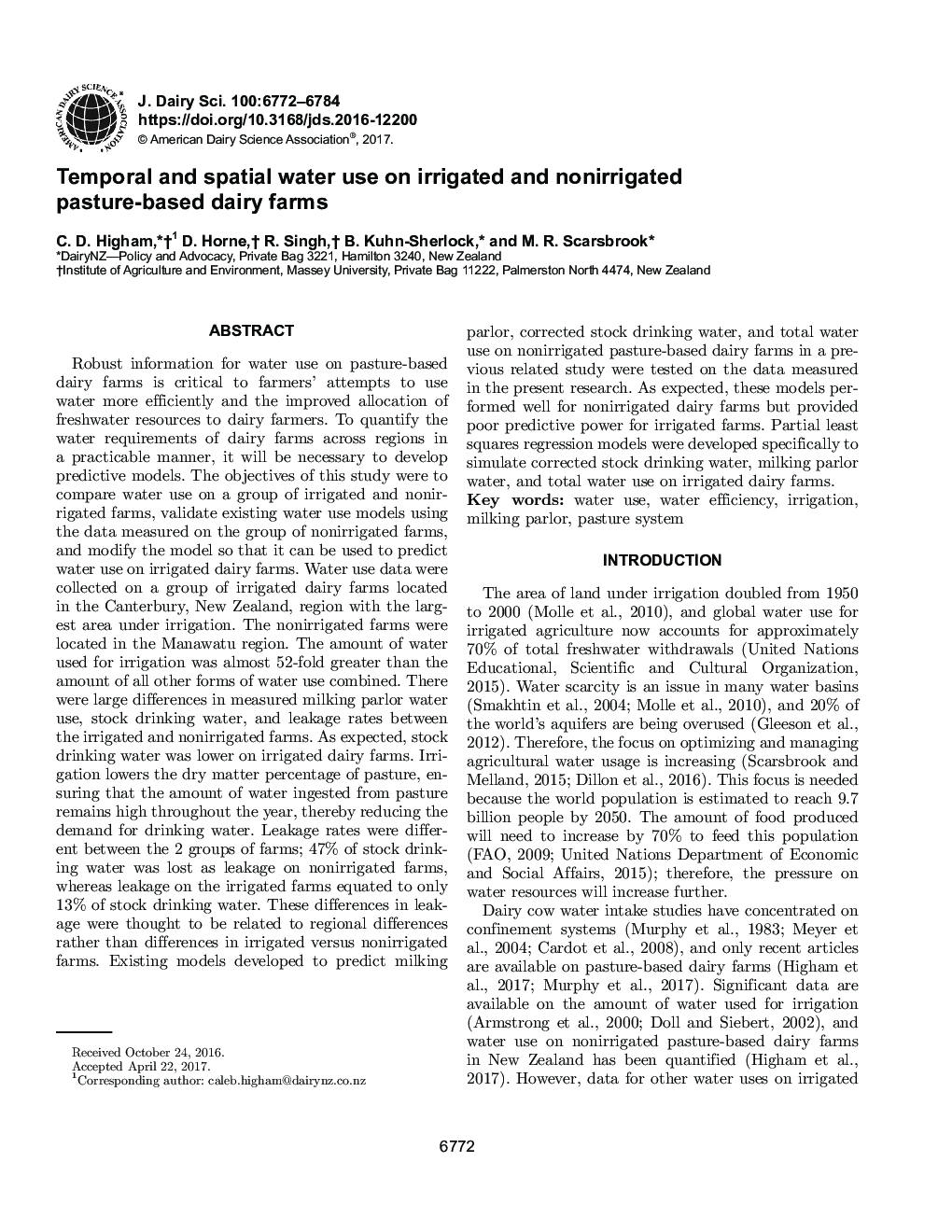| Article ID | Journal | Published Year | Pages | File Type |
|---|---|---|---|---|
| 5541954 | Journal of Dairy Science | 2017 | 13 Pages |
Abstract
Robust information for water use on pasture-based dairy farms is critical to farmers' attempts to use water more efficiently and the improved allocation of freshwater resources to dairy farmers. To quantify the water requirements of dairy farms across regions in a practicable manner, it will be necessary to develop predictive models. The objectives of this study were to compare water use on a group of irrigated and nonirrigated farms, validate existing water use models using the data measured on the group of nonirrigated farms, and modify the model so that it can be used to predict water use on irrigated dairy farms. Water use data were collected on a group of irrigated dairy farms located in the Canterbury, New Zealand, region with the largest area under irrigation. The nonirrigated farms were located in the Manawatu region. The amount of water used for irrigation was almost 52-fold greater than the amount of all other forms of water use combined. There were large differences in measured milking parlor water use, stock drinking water, and leakage rates between the irrigated and nonirrigated farms. As expected, stock drinking water was lower on irrigated dairy farms. Irrigation lowers the dry matter percentage of pasture, ensuring that the amount of water ingested from pasture remains high throughout the year, thereby reducing the demand for drinking water. Leakage rates were different between the 2 groups of farms; 47% of stock drinking water was lost as leakage on nonirrigated farms, whereas leakage on the irrigated farms equated to only 13% of stock drinking water. These differences in leakage were thought to be related to regional differences rather than differences in irrigated versus nonirrigated farms. Existing models developed to predict milking parlor, corrected stock drinking water, and total water use on nonirrigated pasture-based dairy farms in a previous related study were tested on the data measured in the present research. As expected, these models performed well for nonirrigated dairy farms but provided poor predictive power for irrigated farms. Partial least squares regression models were developed specifically to simulate corrected stock drinking water, milking parlor water, and total water use on irrigated dairy farms.
Related Topics
Life Sciences
Agricultural and Biological Sciences
Animal Science and Zoology
Authors
C.D. Higham, D. Horne, R. Singh, B. Kuhn-Sherlock, M.R. Scarsbrook,
